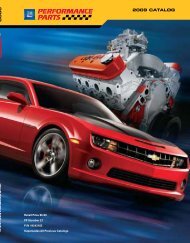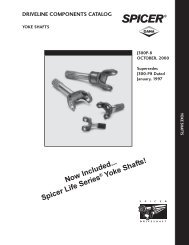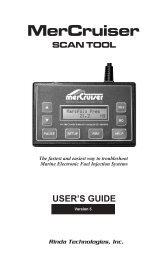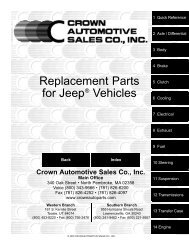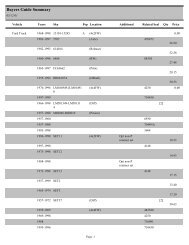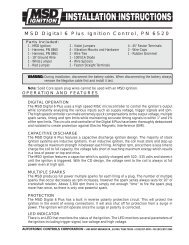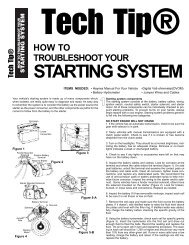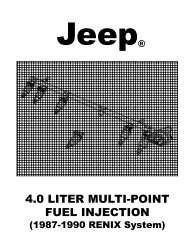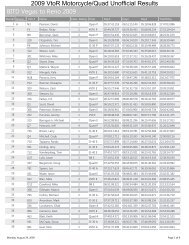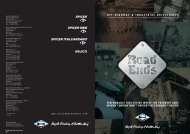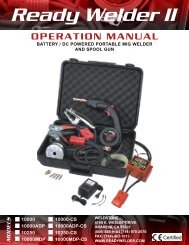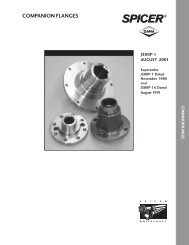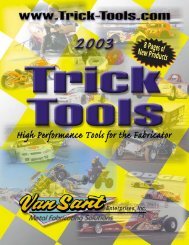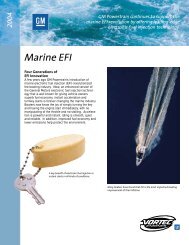Ball and Roller Bearings - Ntn-snr.com
Ball and Roller Bearings - Ntn-snr.com
Ball and Roller Bearings - Ntn-snr.com
You also want an ePaper? Increase the reach of your titles
YUMPU automatically turns print PDFs into web optimized ePapers that Google loves.
External bearing sealing devices<br />
12. External bearing sealing devices<br />
External seals have two main functions: to prevent<br />
lubricating oil from leaking out, <strong>and</strong>, to prevent dust, water,<br />
<strong>and</strong> other contaminants from entering the bearing. When<br />
selecting a seal, the following factors need to be taken into<br />
consideration: the type of lubricant (oil or grease), seal<br />
peripheral speed, shaft fitting errors, space limitations,<br />
seal friction <strong>and</strong> resultant heat increase, <strong>and</strong> cost.<br />
Sealing devices for rolling bearings fall into two main<br />
classifications: non-contact seals <strong>and</strong> contact seals.<br />
¡Non-contact seals: Non-contact seals utilize a small<br />
clearance between the shaft <strong>and</strong> the housing cover.<br />
Therefore friction is negligible, making them suitable for<br />
high speed applications.<br />
In order to improve sealing capability, clearance<br />
spaces are often filled with lubricant.<br />
¡Contact seals: Contact seals ac<strong>com</strong>plish their sealing<br />
action through the contact pressure of a resilient part of<br />
the seal (the lip is often made of synthetic rubber) <strong>and</strong><br />
the sealing surface. Contact seals are generally far<br />
superior to non-contact seals in sealing efficiency,<br />
although their friction torque <strong>and</strong> temperature rise<br />
coefficients are higher. Furthermore, because the lip<br />
portion of a contact seal rotates while in contact with<br />
the shaft, the allowable seal peripheral speed varies<br />
depending on seal type.<br />
Lubrication is necessary at the contact surface<br />
between the lip portion of the contact seal <strong>and</strong> the<br />
shaft. Ordinary bearing lubricant can also be used for<br />
this purpose.<br />
The following chart lists the special characteristics of<br />
seals <strong>and</strong> other points to be considered when choosing<br />
an appropriate seal.<br />
Type Seal construction Name Seal characteristics <strong>and</strong> selection considerations<br />
Non-contact seals<br />
Clearance seal<br />
<br />
<br />
<br />
<br />
<br />
Oil groove seal<br />
(oil grooves on<br />
housing side)<br />
<br />
<br />
<br />
<br />
<br />
Oil groove seal<br />
(oil grooves on<br />
shaft <strong>and</strong> housing<br />
side)<br />
Axial labyrinth<br />
seal<br />
<br />
<br />
<br />
<br />
<br />
Radial<br />
labyrinth seal<br />
<br />
<br />
<br />
<br />
<br />
<br />
Aligning<br />
labyrinth seal<br />
This is an extremely simple seal<br />
design with a small radial<br />
clearance.<br />
<br />
<br />
<br />
Several concentric oil grooves are<br />
provided on the housing inner<br />
diameter to greatly improve the<br />
sealing effect. When the grooves<br />
are filled with lubricant, the<br />
intrusion of contaminants from the<br />
outside is prevented.<br />
<br />
Oil grooves are provided on both<br />
the shaft outer diameter <strong>and</strong><br />
housing inner diameter for a seal<br />
with even greater sealing<br />
efficiency.<br />
This seal has a labyrinth<br />
passageway on the axial side of<br />
the housing.<br />
<br />
<br />
<br />
<br />
A labyrinth passageway is affixed<br />
to the radial side of the housing.<br />
For use with split housings. This<br />
offers better sealing efficiency than<br />
axial labyrinth seals.<br />
<br />
<br />
<br />
The seal's labyrinth passageway is<br />
slanted <strong>and</strong> has sufficient<br />
clearance to prevent contact<br />
between the housing projections<br />
<strong>and</strong> the shaft even as the shaft<br />
realigns.<br />
Cautionary points regarding selection<br />
In order to improve sealing<br />
efficiency, clearances between the<br />
shaft <strong>and</strong> housing should be<br />
minimized. However, care should<br />
be taken to confirm shaft/bearing<br />
rigidity <strong>and</strong> other factors to avoid<br />
direct shaft-housing contact during<br />
operation.<br />
Oil groove clearance (reference)<br />
Shaft diameter mm<br />
Clearance mm<br />
50Up to0.20.4<br />
50or above0.51.0<br />
Oil groove width, depth (reference)<br />
width : 25 mm<br />
depth : 45 mm<br />
Three or more oil grooves should<br />
be provided.<br />
Sealing efficiency can be further<br />
improved by filling the oil groove<br />
portion with grease of which the<br />
viscosity grade is 150 to 200.<br />
Grease is generally used as the<br />
lubricant for labyrinth seals, <strong>and</strong>,<br />
except in low speed applications,<br />
is <strong>com</strong>monly used together with<br />
other sealing devices.<br />
Cautionary points regarding selection<br />
In order to improve sealing<br />
efficiency, labyrinth passageway<br />
clearances should be minimized.<br />
However, care should be taken to<br />
confirm shaft/bearing rigidity, fit,<br />
internal clearances <strong>and</strong> other<br />
factors to avoid direct contact<br />
between labyrinth projections<br />
during operation.<br />
Labyrinth clearance (reference)<br />
Shaft Clearance mm<br />
diameter<br />
mm Radial direction Axial direction<br />
500.20.41.02.0<br />
50200 0.51.03.05.0<br />
Sealing efficiency can be further<br />
improved by filling the labyrinth<br />
passageway with grease of which<br />
the viscosity grade is 150 to 200.<br />
Labyrinth seals are suitable for<br />
high speed applications.<br />
A-78



